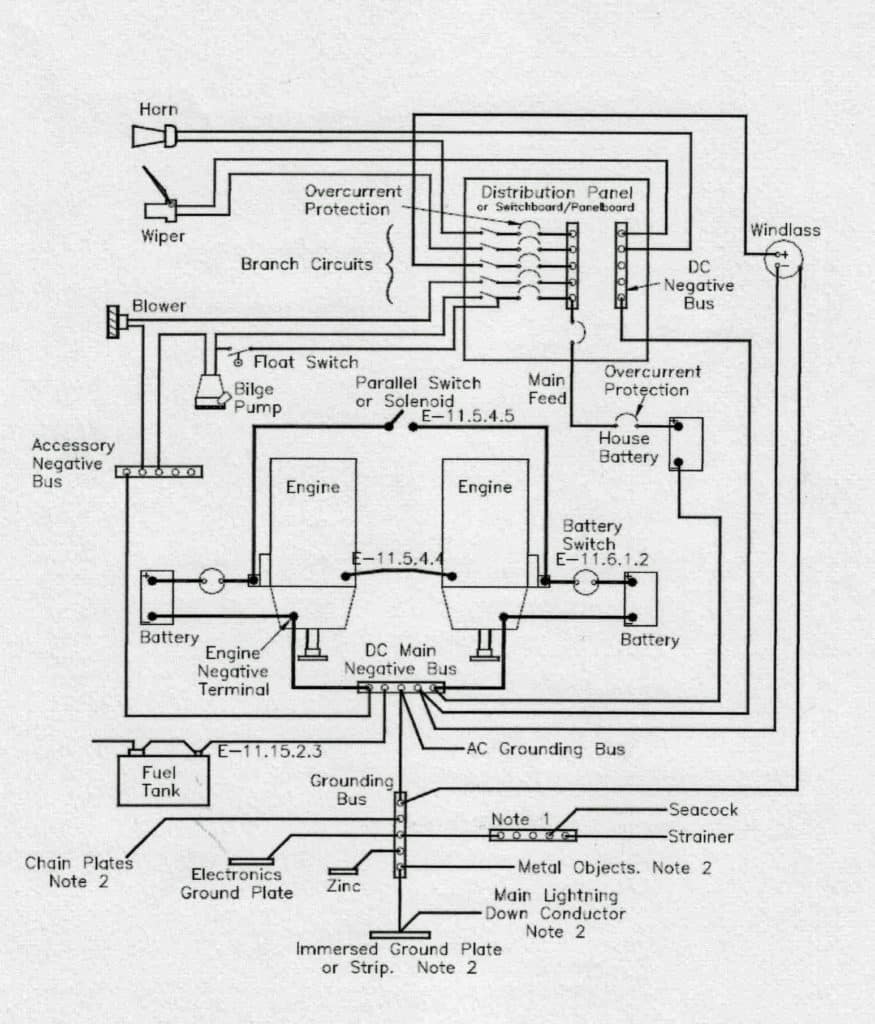
abycgroundingsystem_8272.jpg
Every now and then the topic of bonding a boat’s underwater metal comes up. Sometimes pretty heated discussions can get going among the marine systems geeks that get interested in this topic. In any event, its worth sharing some insight into this topic with all, especially in light of my post last week that discussed the poor fellow’s new boat that sank due to an issue with electrolytic corrosion.
When we talk about a bonding system on a boat we are discussing a system, usually made up of minimum 8 AWG wire and or copper strap that interconnects all of the underwater metals and also large metal objects on board like metal fuel tanks and such. The system can also become integral with a cathodic protection system. This all gets tied into the boat’s grounding system. A line drawing, which comes from the ABYC Electrical Standard E-11 is shown below and it illustrates all of this inter-connection.

The area to focus on here is the lower portion of the diagram where you see the zinc (think anode, it may actually be made of aluminum alloy or even magnesium in fresh water). You can also see bits of underwater metal, like seacocks and such tied into this system.
The system is also tied into the boat’s grounding bus and ultimately the boat’s AC and DC grounding bus bars. Which are connected to the boat’s battery(s).
The idea here is simple, but really does confuse most people. It all boils down to a basic electrical fundamental that states that if there is no difference in potential (think voltage here)from one point in an electrical circuit to another, then there can be no electrical current flow. Well, with that thought in mind, if all the metals are tied together via the bonding system, then they become equalized electrically and even if there is an induced ground fault leak from the battery as happened in my underwater lighting case, if all the connected bits of metal are at the same electrical potential then there will be no current flow. No current flow= no corrosion of underwater metals.
The bottom line here? The underwater lights on the sunken boat had not been bonded. Current leaked right out of the fixtures into the water and found an alternative path back to ground, actually via a nearby transom anode in this case. The anode was connected to the bonding system, and ultimately the batteries on board. The bonding system brought the fault current back to its source. Unfortunately it took out the light housings as a part of the process in this case.







